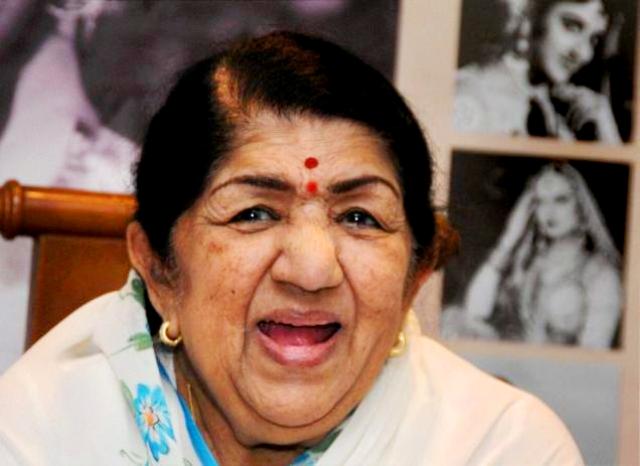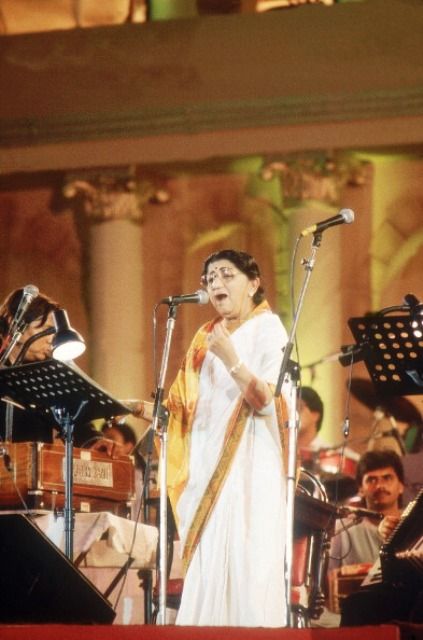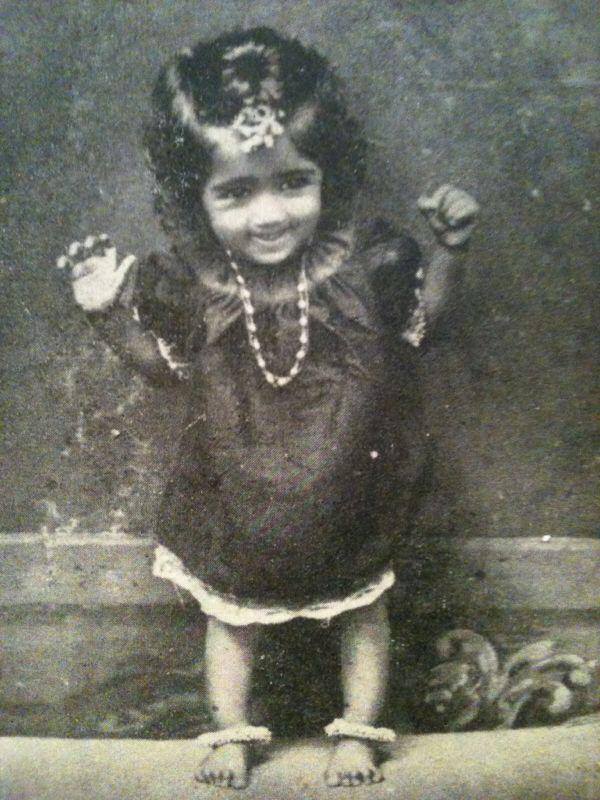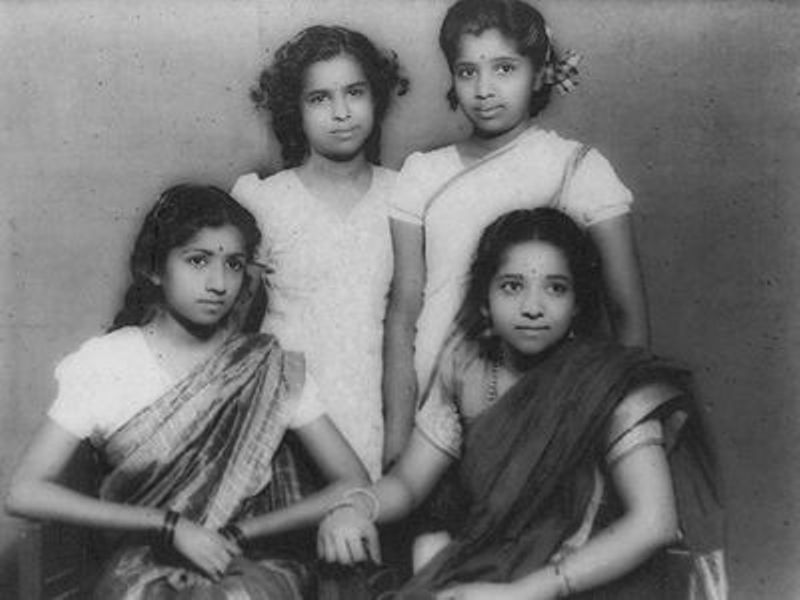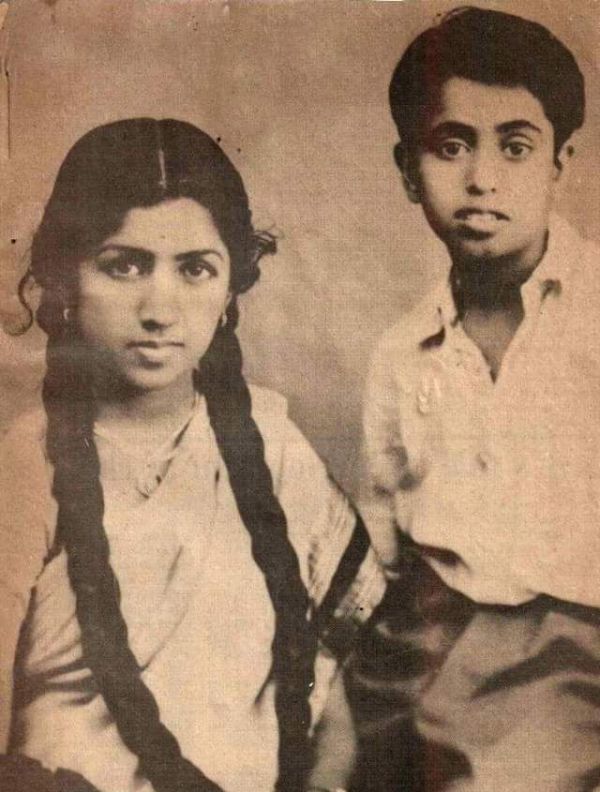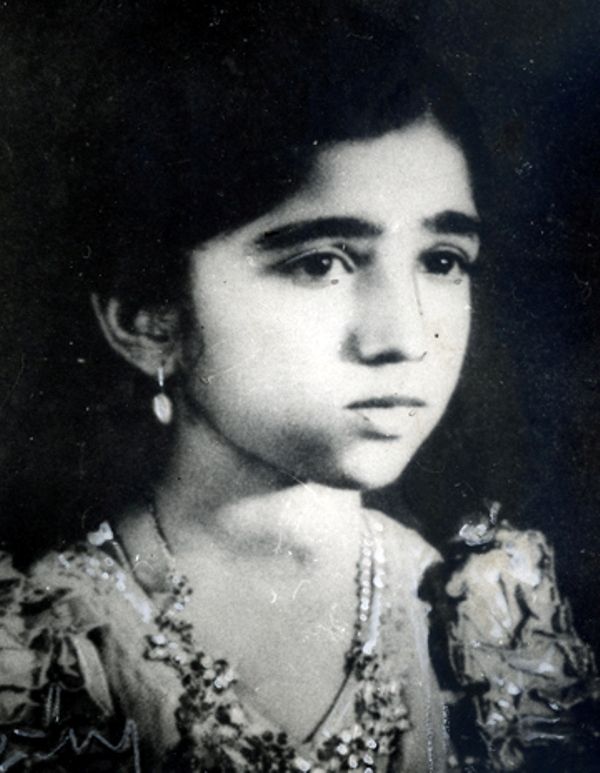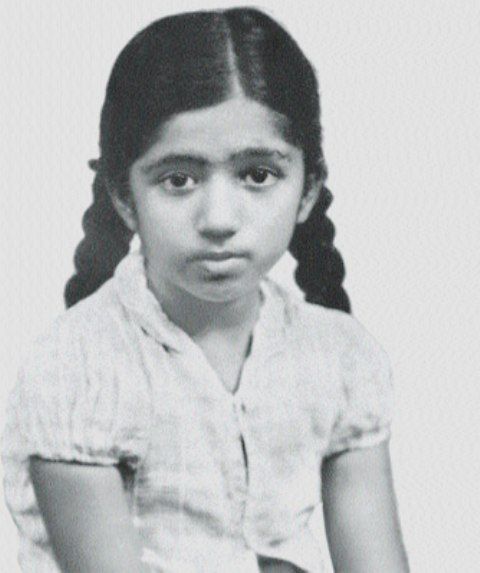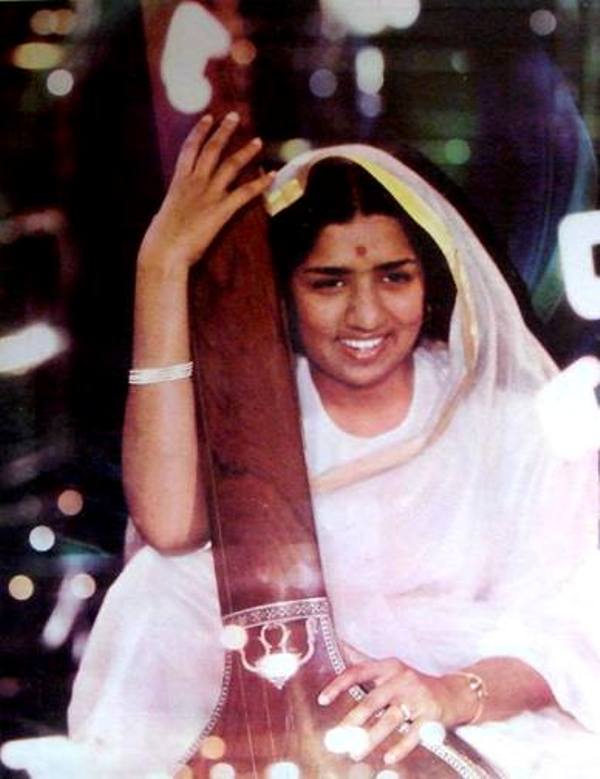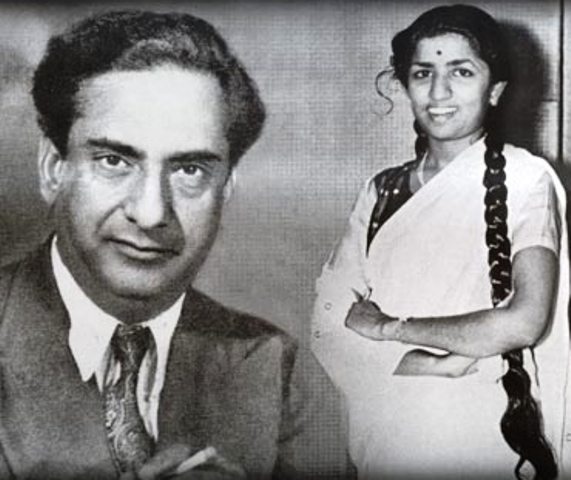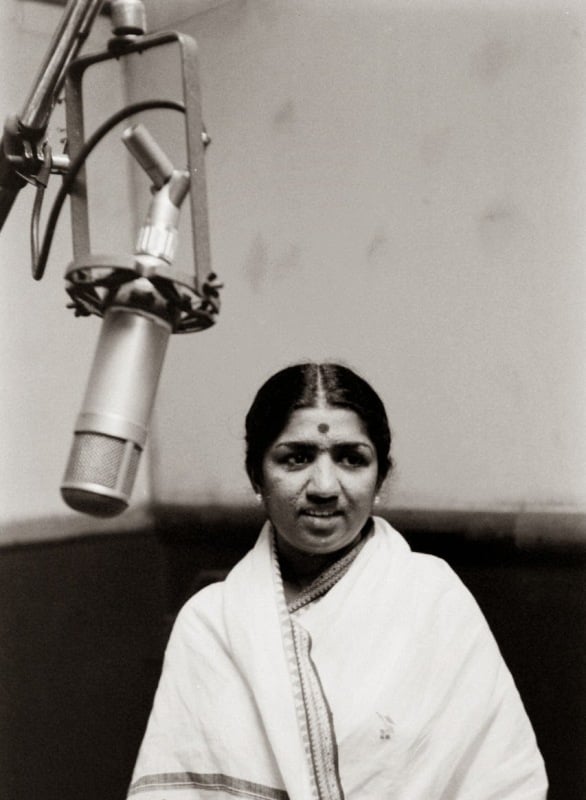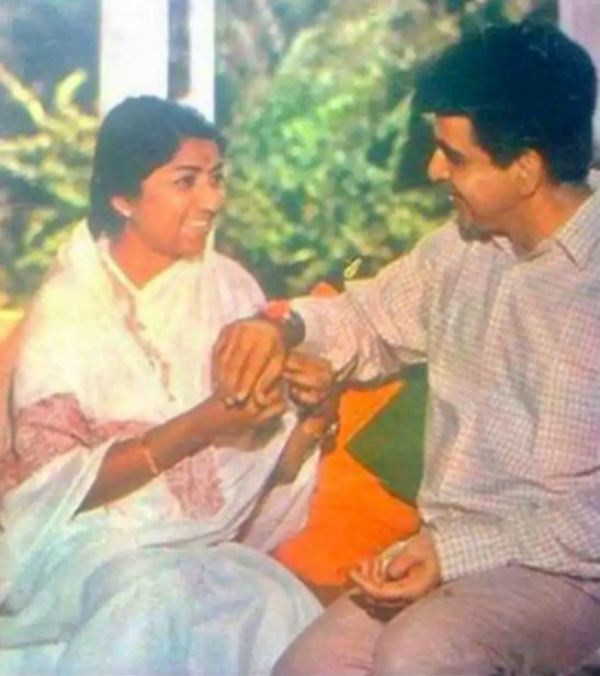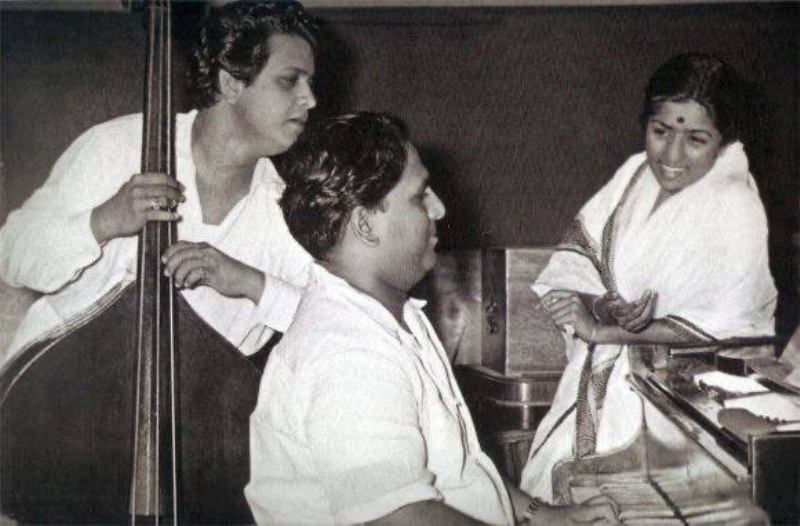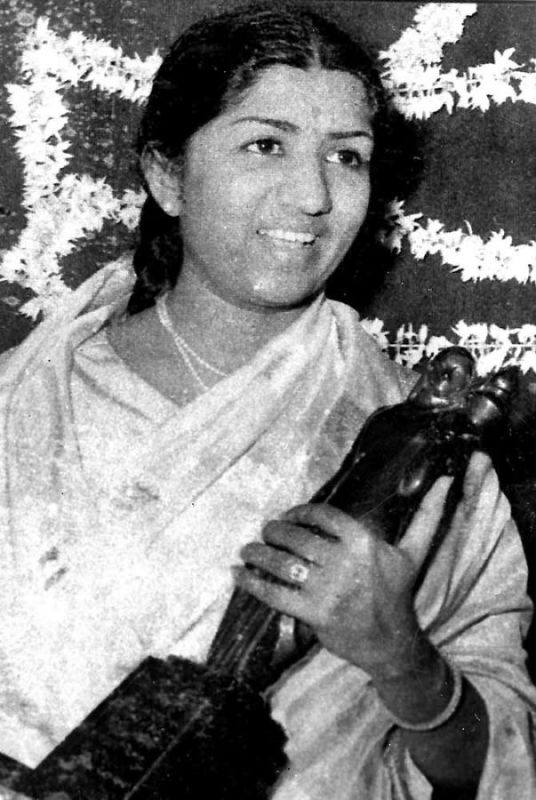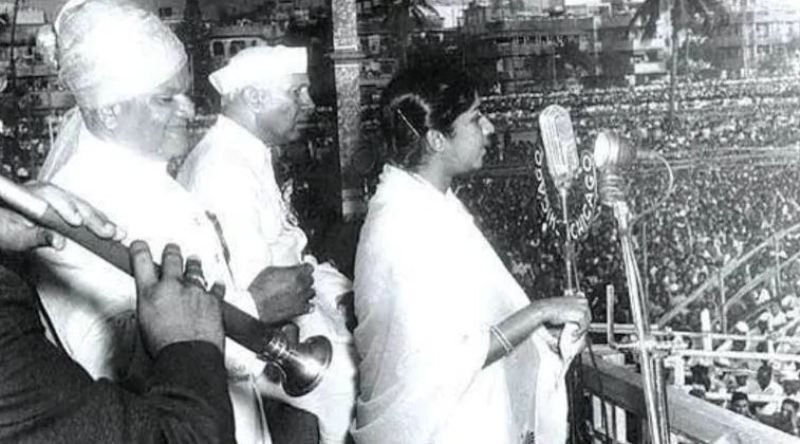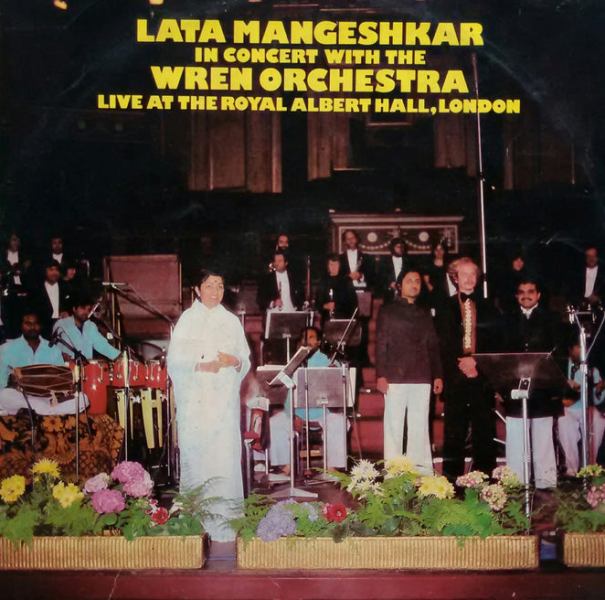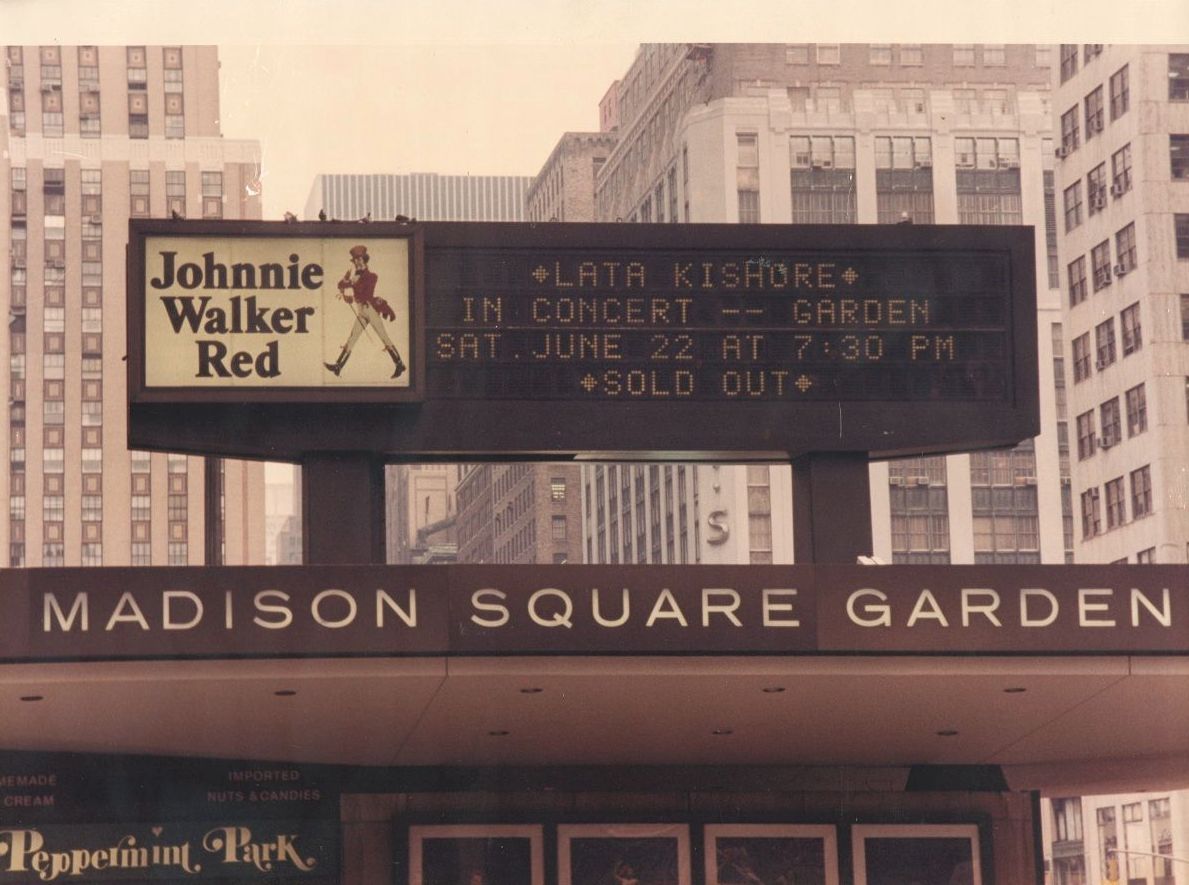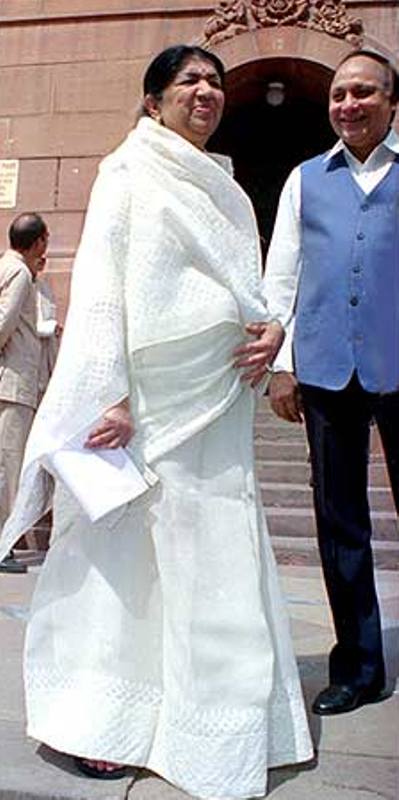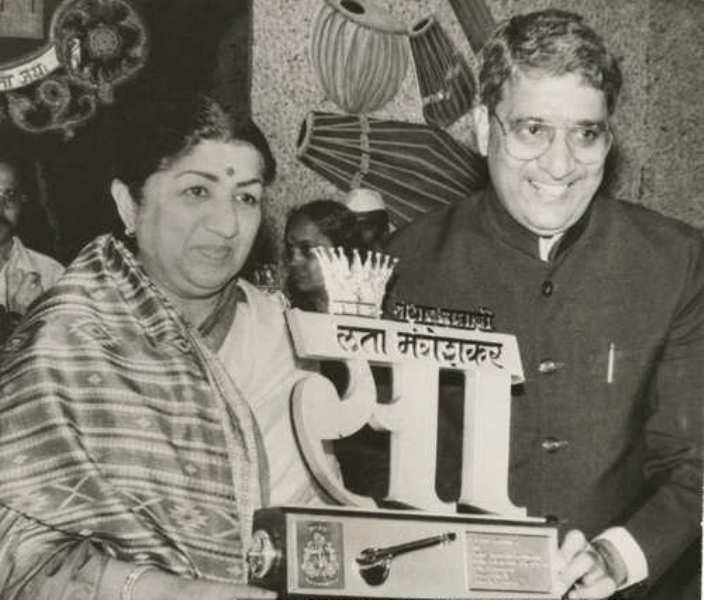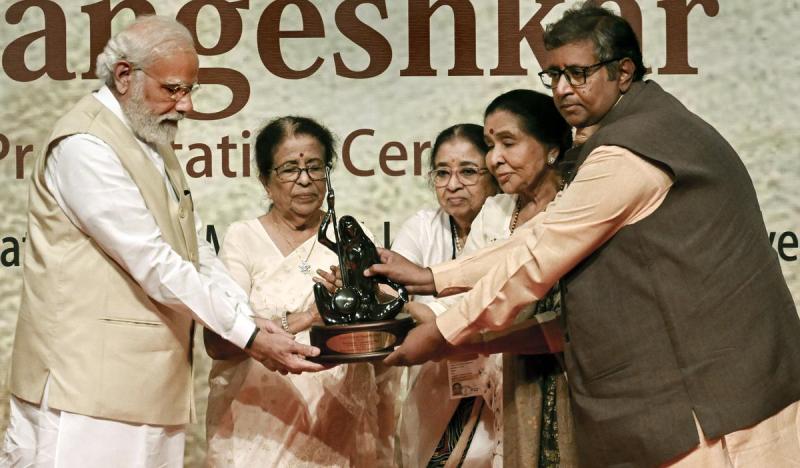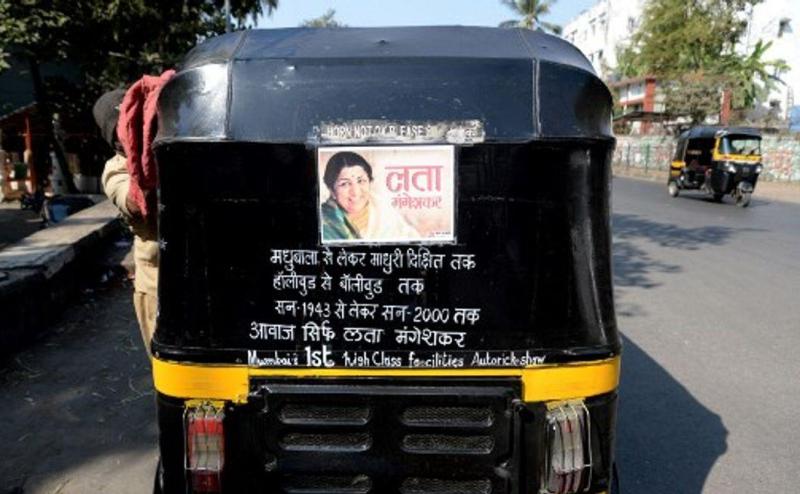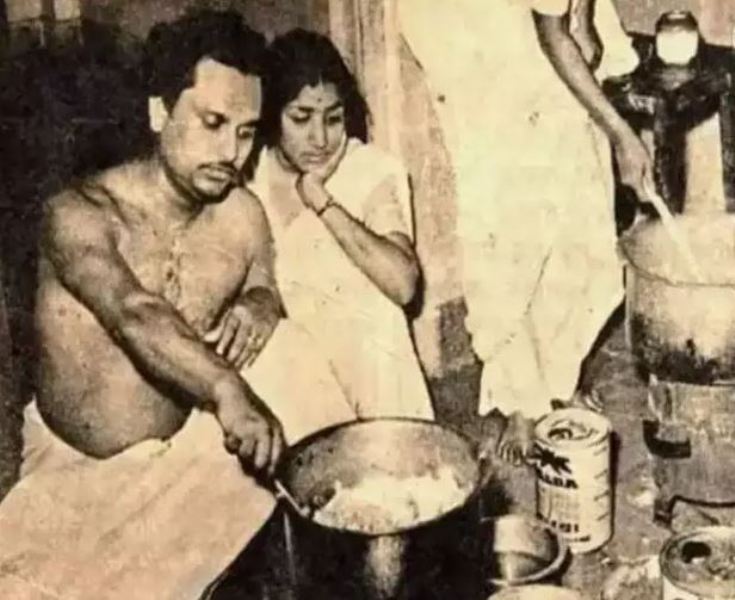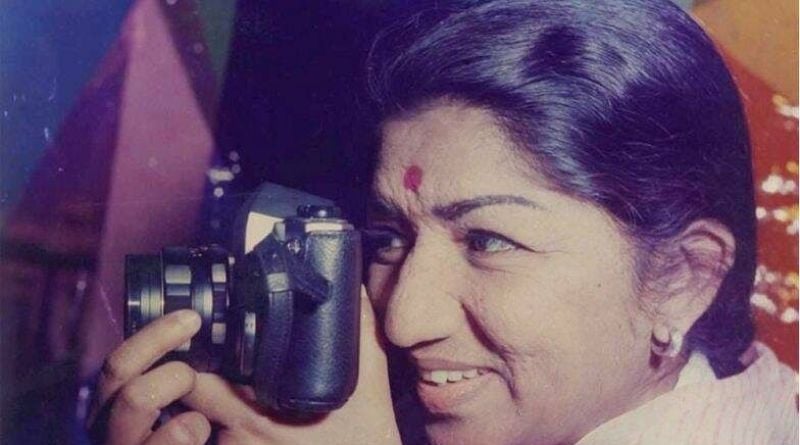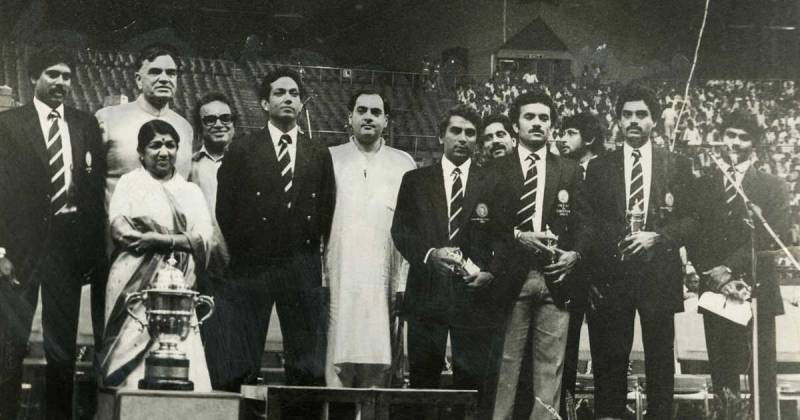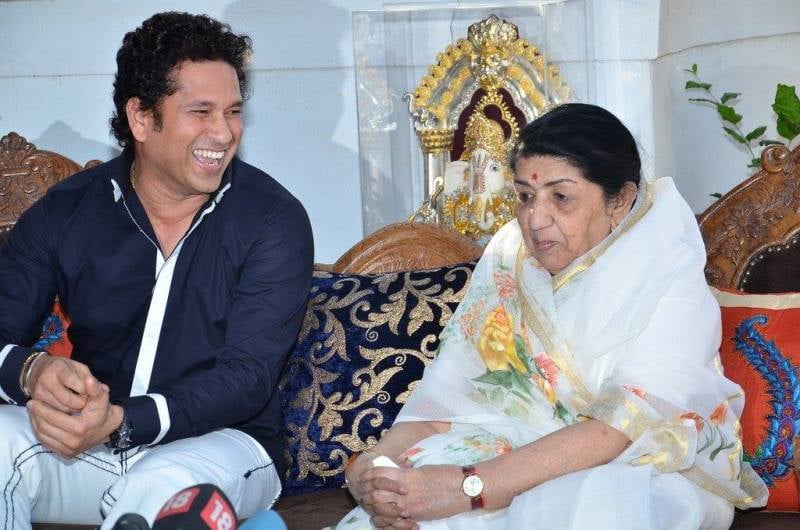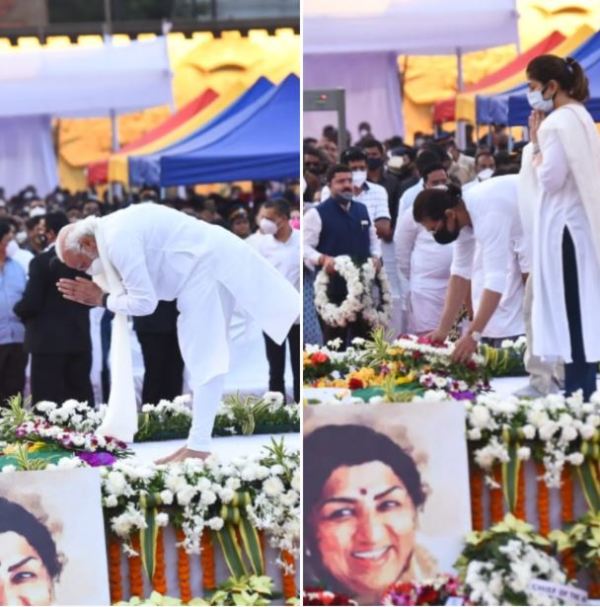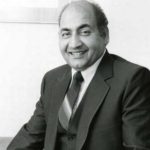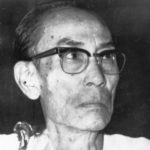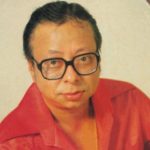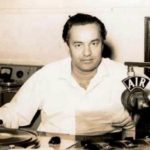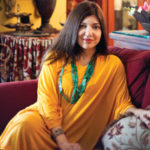Lata Mangeshkar Age, Death, Husband, Family, Biography
| Bio/Wiki | |
|---|---|
| Birth name | Hema Mangeshkar [1]The Economic Times |
| Nickname | Lata Didi [2]Vox |
| Names earned [3]India Today | • Nightingale of India • Voice of the Millennium • Queen of Melody |
| Profession(s) | • Playback Singer • Music Composer (occasional) • Film Producer (occasional) |
| Physical Stats & More | |
| Height (approx.) | in centimeters- 155 cm in meters- 1.55 m in feet & inches- 5’ 1” |
| Eye Colour | Black |
| Hair Colour | Salt & Pepper |
| Music | |
| Category | Playback Singing |
| Music Teacher(s) | • Deenanath Mangeshkar (her father) • Ustad Amanat Ali Khan • Amanat Khan Devaswale • Ghulam Haidar • Pandit Tulsidas Sharma • Anil Biswas Note: Reportedly, it was Anil Biswas who taught her breath control and how not to break up words or phrases in songs. 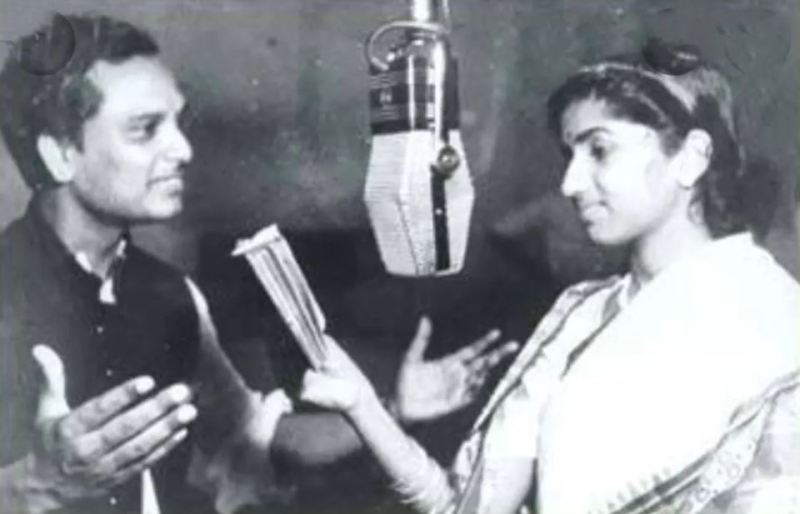 |
| Debut | Playback Singing • Hindi: "Mata Ek Sapoot Ki Duniya Badal De Tu" from the Marathi film Gajaabhaau (1943) • Bengali: 'Akash Prodeep Jole' (1956) - composed by Satinath Mukhopadhyay • Gujarati: 6 songs from the Gujarati film Mehndi Rang Lagyo (1960) • Kannada: 2 songs from the Kannada film Kranthiveera Sangolli Rayanna (1967) • Malayalam: 'Kadhali Chenkadhali' from the Malayalam film Nellu (1974); this is the only song that she recorded in Malayalam. [4]The Times of India • Meitei: 'Nungshiba Magi Ethak Ereida' from the Meitei film Meichak (1999) • Odia: 'Sei chuna chuna tara phula aaji' from the film Surjyamukhi (1963) • Punjabi: 'Pyar De Bhuleke' from the Hindi film Guddi (1971) • Sinhala: 2 songs from the Sinhala film Seda Sulang (1955) • Tamil: 4 songs from the Tamil film Aan (Murattu Adiyaal) (1953) • Telugu: 'Niddurapora Thammuda' from the Telugu film Santhanam (1955) • Bhojpuri: 'Hey Ganga Maiya Tohe Piyari Chadhaibo' from the Bhojpuri film 'Ganga Maiya Tohe Piyari Chadhaibo' (1963) Acting • Marathi Film: Pahili Mangalgour (1943); she played the heroine's sister 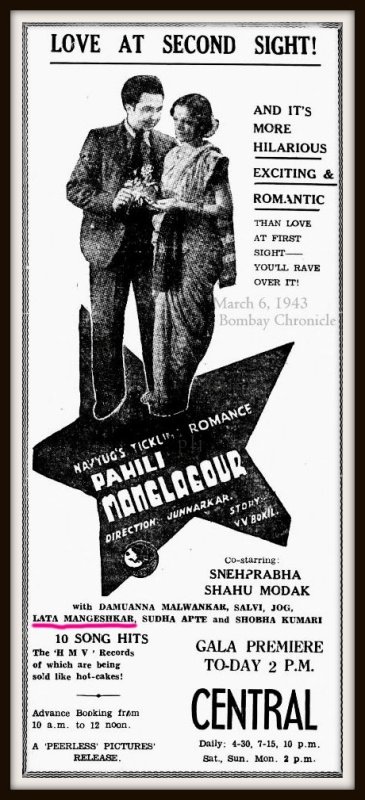 Music Director • Marathi Film: Ram Ram Pavhana (1960) Producer • Marathi Film: Vaadal (1953) • Hindi Film: Jhaanjhar (1953) |
| First Recorded Song | "Naachu Yaa Gade, Khelu Saari Mani Haus Bhaari" composed by Sadashivrao Nevrekar for Vasant Joglekar's Marathi movie Kiti Hasaal (1942) Note: She recorded this song at the age of 13; however, the song was dropped from the final cut. [5]Sify |
| Last Recorded Song (non-film) | • A rendition of the Gayatri Mantra that she recorded for Mukesh Ambani's daughter Isha Ambani's wedding in 2018; she recorded this song at the age of 89. [6]India Today • 'Saugandh Mujhe Is Mitti Ki;' this song was released in 2019, which was a tribute to the Indian Army. [7]Deccan Herald |
| Last Recorded Song (film) | "Jeena kya hai, jaana maine" for Dunno Y2... Life Is a Moment (2015) |
| Last Released Song | 'Theek Nahi Lagta,' penned by Gulzar; she recorded this song for Vishal Bhardwaj in the 90's; however, the song was released on YouTube in 2021. [8]Deccan Herald |
| Last full-fledged album | Veer-Zaara (2004) |
| Awards, Honours, Achievements | National Film Awards 1972: Best Female Playback Singer for songs from the film Parichay 1974: Best Female Playback Singer for songs from the film Kora Kagaz 1990: Best Female Playback Singer for songs from the film Lekin... Filmfare Awards 1959: Best Female Playback Singer for the song "Aaja Re Pardesi" from Madhumati 1963: Best Female Playback Singer for the song "Kahi Deep Jale Kahi Dil" from Bees Saal Baad 1966: Best Female Playback Singer for the song "Tumhi Mere Mandir Tumhi Meri Pooja" from Khandan 1970: Best Female Playback Singer for the song "Aap Mujhe Achhe Lagne Lage" from Jeene Ki Raah 1994: Filmfare Lifetime Achievement Award 1995: Filmfare Special Award for "Didi Tera Devar Deewana" from Hum Aapke Hain Koun..! Maharashtra State Film Awards 1960: Best Music Director Award for the film Sadhi Manase 1966: Best Playback Singer for Sadhi Mansa 1977: Best Playback Singer for Jait Re Jait 1997: Maharashtra Bhushan Award 2001: Maharashtra Ratna (First Recipient) Government of India Awards 1969: Padma Bhushan 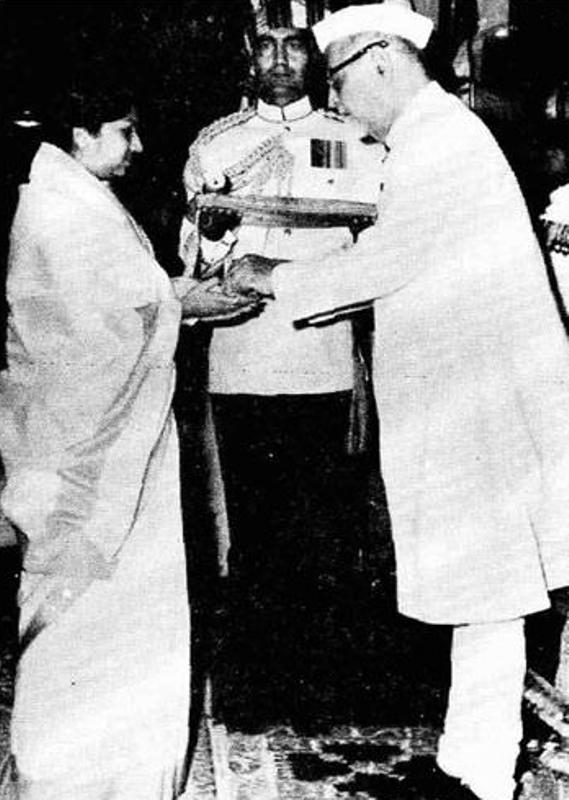 1989: Dada Saheb Phalke Award 1999: Padma Vibhushan 2001: Bharat Ratna 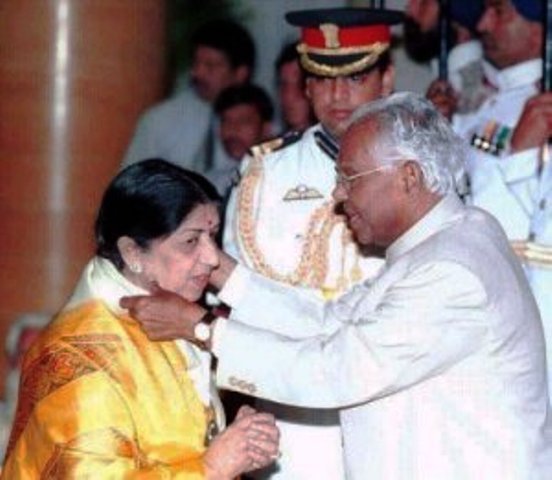 2008: "One Time Award for Lifetime Achievement" honour to commemorate the 60th anniversary of India's independence Other Awards/Honours 2009: 'Officier de la Legion d'honneur' by the French government 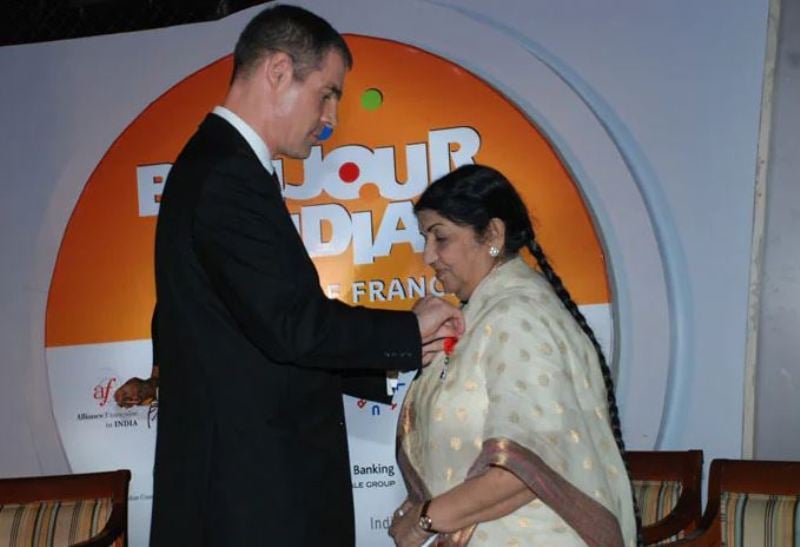 Note: Along with these, she has many other awards, honours, achievements to her name. |
| Personal Life | |
| Date of Birth | 28 September 1929 (Saturday) |
| Birthplace | Indore, Indore State, Central India Agency, British India |
| Date of Death | 6 February 2022 |
| Place of Death | Breach Candy Hospital, Mumbai |
| Cremation Site | Shivaji Park, Mumbai |
| Age (at the time of death) | 92 Years |
| Death Cause | COVID-19 complications and multiple organ failure [9]The Economic Times |
| Zodiac sign | Libra |
| Signature | 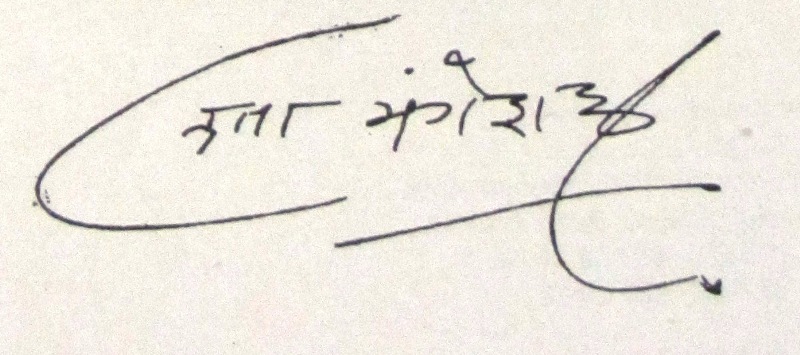 |
| Nationality | Indian |
| Hometown | Mumbai, India |
| School | She attended a school in Mumbai, only for a single day. [10]India Today |
| College/University | Did not attend |
| Educational Qualification | Lata Mangeshkar never received formal education. She was taught Marathi alphabet by a maid, she learnt Sanskrit by a local preist, while other tutors and relatives taught her other subjects at home. [11]BBC |
| Religion | Hinduism Note: She was the follower of deity Mangesh, and the Mangeshi temple is the family deity or Kul daivat of Lata Mangeshkar and her family. [12]Tripadvisor |
| Caste | Goud Saraswat Brahmin [13]Tripadvisor |
| Food Habit | Non-Vegetarian Note: Lata Mangeshkar was fond of non-vegetarian food. [14]The Times of India 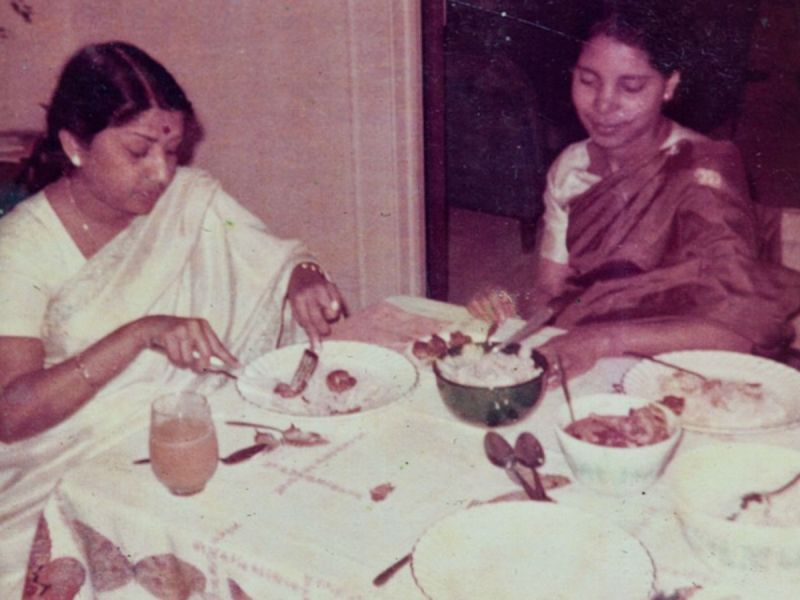 |
| Political Inclination | According to the legendary singer, she was not affiliated with any political party. In an interview, she said, “In fact, I pleaded with those who urged me into Rajya Sabha to let me off. Though I had the highest regard for (Bharatiya Janata Party leader) L K Advaniji and (former Prime Minister) Atal Bihari Vajpayeeji, I still do — I am not affiliated to any political party.” [15]The Indian Express |
| Hobbies | Cooking, Photography, Watching Cricket Matches, Playing the Slot Machines in Las Vegas |
| Controversies | • Royalty issue with Rafi: In the '60s, Lata and Rafi had an argument over royalties. According to Lata, recording companies should pay royalties to singers; Mukesh, Talat Mahmood, Kishore Kumar, and Manna Dey also backed her in this; however, Mohammed Rafi and Asha Bhosle believed that singers should get one-time payment from record producers, and Rafi believed that they should not fight over royalties. According to Lata, the issue created a rift between them, and they did not sing together from 1963 to 1967. Later, Rafi sent her a letter in which he wrote that he had spoken in haste. It was S. D. Burman who brought them together, and they met on the stage of the S D Burman Night that was held at Shanmukhananda Hall in 1967, and nearly after five years, they sang togehter the Jewel Thief duet 'Dil Pukaare.' [16]Rediff • Criticized by a close friend: Once, one of Lata's close friends named Ramchandra called her "a despotic, ruthless and vain woman; a jealous woman who cannot tolerate a single other singer; a business woman rather than an artiste." [17]India Today • Accusations for spoiling the career of her rivals: According to some critics, when it came to evicting her competitors, Lata pulled no punches to ensure they never survive, and they considered her to be responsible for evicting the singers like Vani Jairam, Runa Laila, Sulakshana Pandit, Priti Sagar, and Hemlata from the industry. Although none of them came forward to accuse her in public, off-record, some of them exposed her modus-operandi. Once, one of them said, "She is deceitful and has the low cunning of a bania. Often she gives boost to a singer by recommending her to music directors, and makes it known immediately so that nobody can accuse her of being intolerant later on. Thereafter, she begins to pull the strings. At first, the 'offending' music directors find their dates with Lata cancelled. Then her 'close sources' pass on the message that peace with her could be bought only at a price, that they'd have to 'eject' the new singer." [18]India Today • Guinness Book of Records Dispute: In 1974, the Guinness Book of Records listed her as the most recorded artist in human history, stating that she lent her voice to not less than 25,000 songs in more than 20 languages between 1948 and 1974. This claim was contested by Mohammed Rafi who claimed to have sung around 28,000 songs. After Rafi's demise, the Guinness Book, in its 1984 edition, cited Lata Mangeshkar as the holder of the record for 'Most Recordings' and noted Rafi's claim as well. According to later editions of the Guinness Book, Lata Mangeshkar sang no fewer than 30,000 songs between 1948 and 1987. [19]Deccan Herald • Her absence in parliament: In 2003, Shabana Azmi objected over Lata Mangeshkar's absence in parliament to which she clarified and said that she had met an accident and also had viral fever about which she had already informed the speaker of the Rajya Sabha. Lata asked, "Abhi Shabana Azmi Ko Kya Takleef Hai?" [20]The Times of India |
| Relationships & More | |
| Marital Status (at the time of death) | Unmarried |
| Affairs/Boyfriends | Bhupen Hazarika (lyricist) [21]Hindustan Times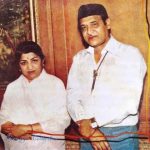 |
| Family | |
| Husband/Spouse | N/A |
| Children | None |
| Parents | Father- Deenanath Mangeshkar (Marathi theatre actor, musician, and vocalist)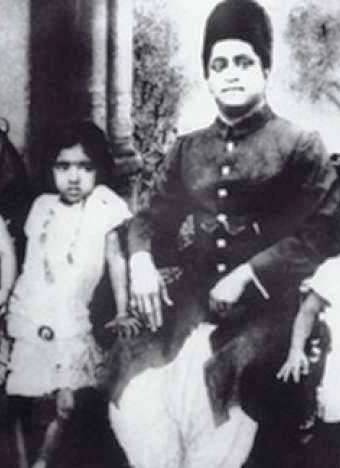 Mother- Shevanti Mangeshkar (sister of Deenanath Mangeshkar's first wife Narmada) 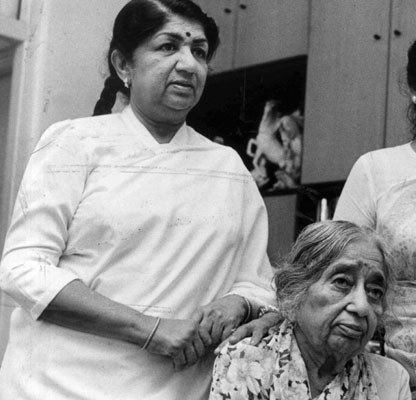 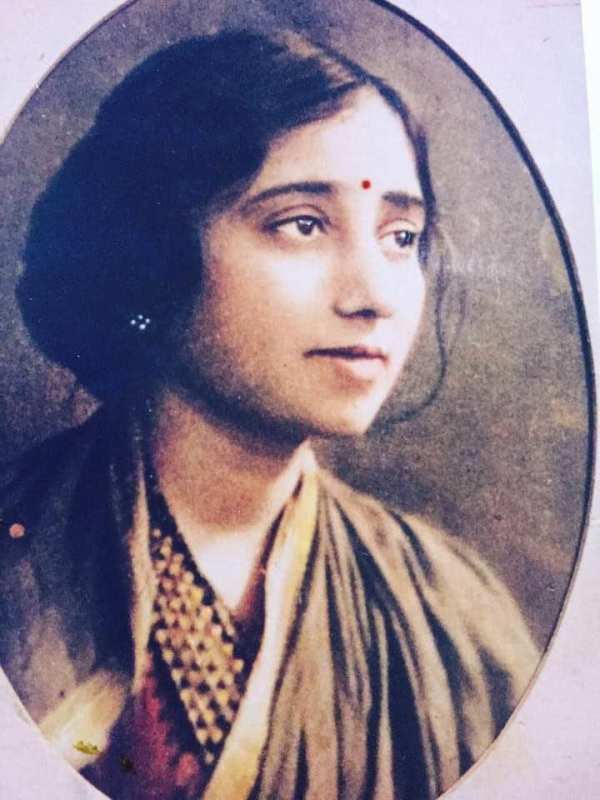 |
| Siblings | Brother- 1 • Hridaynath Mangeshkar (younger; music director) Sisters- 3 • Usha Mangeshkar (younger, playback singer) • Asha Bhosle (younger, playback singer) • Meena Khadikar (younger; playback singer and composer) 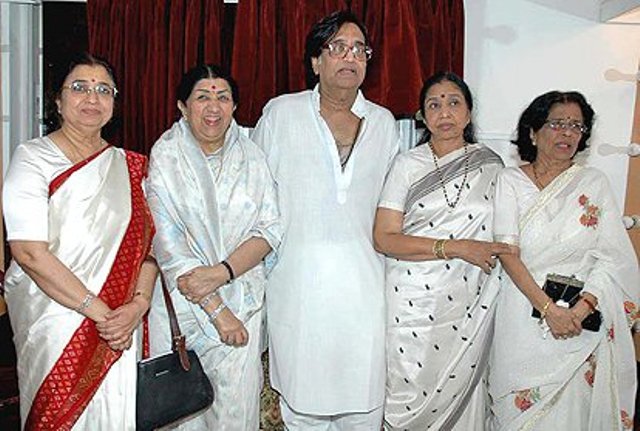 |
| Favourites | |
| Musician(s) | Ghulam Haidar, Madan Mohan, Laxmikant Pyarelal, A. R. Rahman |
| Singer | K. L. Saigal |
| Film(s) | The King and I (1956), Kismet (1943), James Bond Films Note: According to Lata, she saw The King and I at least 15 times. [22]BBC |
| Holiday Destination(s) | Los Angeles, Las Vegas |
| Food [23]Hindustan Times | Zeera Chicken, Methi Chicken, Dal Makhani, Aloo Sabudana Tikki Chaat, Nariayal Makhane ki Kheer, Keema Samosa |
| Dessert | Jalebi with extra saffron |
| Beverage | Coca-Cola |
| Sport | Cricket |
| Cricketer | Sachin Tendulkar |
| Politician(s) | Atal Bihari Vajpayee, Narendra Modi [24]Hindustan Times |
| Style Quotient | |
| Car Collection | She had a great collection of cars at her garage at Prabhu Kunj including Buick, a Chrysler, and a Mercedes. [25]News 18 Note: She owned her first car at the age of eighteen, a Hillman. 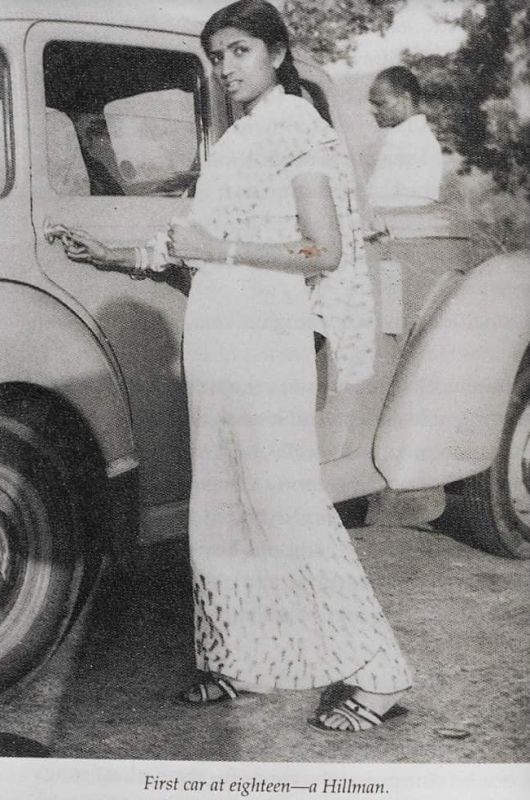 |
| Money Factor | |
| Salary/Income (approx.) (at the time of death) | Her monthly income was around Rs. 40 lakh per month that she used to receive from the royalty from her songs. [26]News 18 |
| Net Worth (approx.) (at the time of death) | Some sources claim her net worth to be around Rs. 360 crores, while others claim it to be around Rs. 108-115 crores. [27]News 18 |
Some Lesser Known Facts About Lata Mangeshkar
-
Who is Lata Mangeshkar?
Lata Mangeshkar was a legendary Indian playback singer. The ‘Queen of Melody,’ who began her career in the 1940s, rose to prominence when she lent her voice to the cult song ‘Ayega Aane Waala’ from the 1949 classic Mahal. Through her melodious voice, she redefined the fabric of Indian music, remaining an inseparable part of it for nearly six decades. By the early 2000s, she had decided to focus on her personal commitments and give younger singers a chance. On 6 February 2022, she passed away, marking the end of an era.
It was not really the external influence that made me a singer. Music was within me. I was full of it.” – Lata Mangeshkar
-
Named After a Character from Her Father’s Play
When Lata was born, she was named Hema, which her parents later renamed Lata, which was a female character ‘Latika’ in one of her father’s plays, ‘BhaawBandhan.’ Her father, Deenanath, changed the surname of the family from Hardikar to Mangeshkar as he wanted to identify his family with their native town, Mangeshi in Goa.
-
A Huge Fan of K. L. Saigal
While growing up, Lata became a huge fan of singer K. L. Saigal, and she even wanted to marry him. According to Lata, her family was never supportive of film songs back then, and she was the only one in her family who had permission to sing Saigal’s songs, and she would often sing ‘Ek Bangla Bane Nyaara.’ [28]Bollywood Hungama In an interview, she recalled her fandom for Saigal and said,
As far as I can remember, I always wanted to meet K. L. Saigal. As a child, I used to say that ‘I will get married to him after I grow up’ and that’s when my father explained to me that when I’ll be big enough to get married, Saigal saab will be too old enough to get married.”
-
Smallpox
When Lata Mangeshkar was two years old, she was attacked by smallpox, and she carried its marks throughout her life. [29]India Today
-
Nomadic Childhood
The early life of Lata Mangeshkar is a tale of poverty, hard work, and hard luck. The Maratha heartland of Maharashtra is far away from Indore, where she was born. Her father, Deenanath Mangeshkar, who belonged to Mangeshi in Goa, was a classical singer trained in the colorful Punjabi school of Baba Mushelkar. A theatrical troupe Deenanath owned made him pitch his tent in nearly every town in the state, including Pune, Kolhapur, Satara, Sangli, and Miraj. Lata Mangeshkar, along with her siblings, was roped into a nomadic life by their father’s profession. In the absence of a proper schooling system for his children, Deenanath tried to compensate by injecting them with music lessons at a young age. Lata once said,
The foundation of my musical propensities was laid as early as that.”
The real blow for the family occurred in 1934-35 when Ardeshir Irani, a fearless Parsee, released the first “talkie,” Alam Ara, which ended the silent era in Indian cinema. There were many roving drama companies in Maharashtra, the only other state to have them except Bengal, which were affected by this “sound invasion.” Many companies closed down including Deenanath’s Balwant Sangeet Natak Mandal following which the Mangeshkar family moved to a small trading town, Sangli, where, according to Lata, they settled for the first time. At Sangli, her father started a film company; however, the switchover was not easy as the audience’s interest was rapidly changing in the ’30s, and her father’s productions failed to find many buyers. During this time, her father produced four mythological Marathi plays and one Hindi film, Andheri Duniya, and all were flops in a row. In 1938, her father’s company shut down following which the family again moved to a new location, this time to Pune. [30]India Today
-
Sole Breadwinner
During the remaining four years of Deenanath’s life, the family survived largely on his meager earnings from singing in All India Radio’s Pune station. In 1942, her father died of pleurisy, heart disease, and frustration, and during the same time, her brother, Hridyanath, suffered from tuberculosis of the bones. Lata, who was only 13 at the time, put on full war paint on the eighth day of Deenanath’s death to appear in a film titled Pahili Manglagaw, a Marathi film by Master Vinayak Rao, father of actress Nanda. According to Lata Mangeshkar, she never wanted to enter into the glamour world, and she had to sing and act in films as she was the sole breadwinner of her family after her father’s demise. [31]India Today In an interview, she talked about this and said,
I hated putting on make-up; I hated standing in the glare of lights. But I was the breadwinner of the family, and there was hardly any choice left. The day I went to work in Master Vinayak’s film, there was nothing to eat in the house.”
She also talked about how she missed her childhood as she rose to stardom at an early age. She said,
I missed out on my childhood. I had to work hard, but I was immediately given a place in playback.”
-
Attended School For Only One Day!
She went to school for only one day. It is said that on the very first day of her school, she brought her younger sister, Asha, and started teaching music to other students and when teachers intervened, she was so furious that she stopped going to the school. In an interview, she talked about her anger issues and said,
I have a fierce temper. I’ve mastered it over the years, but when I’m angry, no one can force me to do anything I don’t want to.”
-
First Public Performance
Lata started working as an actress at the age of five in her father’s musical plays (Sangeet Natak) in Marathi. On 9 September 1938, she made her first ‘Shastriya Sangeet’ performance when she accompanied her father to a program at Nutan Sangeet Theatre in Solapur, Maharashtra, where she sang Raag Khambavati. The legendary singer revealed this in a Facebook post that she posted in September 2021.
-
Initial Career
When she was 13 years old, her father died of heart disease in 1942, and after her father’s death, one of the close friends of the Mangeshkar family, Master Vinayak (Vinayak Damodar Karnataki), took care of her family and helped her start a career as an actress and singer. She sang her first song ‘Naachu Yaa Gade, Khelu Saari Mani Haus Bhaari’ for the Marathi film ‘Kiti Hasaal’ in 1942; however, the song was later dropped from the final cut. She sang her debut song ‘Natali Chaitraachi Navalaai’ for the Marathi film ‘Pahili Mangalaa-gaurin’ (1942).
-
Arrived in Bombay
Lata moved to Bombay (now Mumbai) in 1945, where she rented a two-room flat at Nana Chowk that cost her Rs. 25 a month. In the same year, she played a minor role along with her sister Asha in Master Vinayak’s first Hindi film ‘Badi Maa’ (1945). Vinayak was so impressed by her performance that he signed her as a staff artist on a monthly salary of Rs. 60, and by the time Vinayak died in 1947, it was hiked to Rs. 350; however, it was not easy for Lata as she had to feed eight mouths, including cousins. [32]India Today In an interview, Lata’s brother, Hridaynath, recalled this and said,
Didi was burning the candle at both ends to keep the family going.”
-
She Would Have Become a Classical Singer
Lata’s first big achievement in Bombay was her meeting with Aman Ali Khan Bhindi Bazarwala, a classical singer, who accepted her as a student; reportedly, A cord was tied around her arm as part of the ceremonial acceptance. After India’s partition, Aman Ali went to Pakistan, and Lata had to find a guru in Amanat Ali, an accomplished singer who went to the same school as Amir Khan. When Amanat Ali died in 1951, Lata’s apprenticeship in classical music ended abruptly. Lata once wistfully said,
Maybe I’d have become a classical singer if Amanat Ali were alive.”
-
Rejected For Her ‘Thin’ Voice
After Vinayak’s death, Lata had no fixed income following which she approached a supplier of film extras who later introduced her to Master Ghulam Haidar, a close friend of Amanat Ali and a leading music director of the times. Haidar, who was awed by her range and sweet voice, took her to Filmistan, the Mecca of Bombay’s show business, owned by Subodh Mukherjee. When Ghulam Haidar (music director) introduced Lata to Mukherjee who was making the film ‘Shaheed’ (1948), Mukherjee dismissed Lata’s voice as “too thin” and said that her voice would not match that of the heroine, Kamini Kaushal, the screen siren of the ’40s, to this Haidar responded,
In the coming years, producers and directors would “fall at Lata’s feet” and “beg her” to sing in their movies.”
In an interview, Lata Mangeshkar declared that Ghulam Haidar was her true Godfather who trusted her talent.
-
First Breakthrough
On The same day, when Mukherjee rejected her voice, she accompanied Haidar to the studios of Bombay Talkies at Malad, where she was selected to sing for Majboor (1948), and the song ‘Dil Mera Toda, Mujhe Kahin Ka Na Chhora’ from the film became her first breakthrough hit song. She reportedly recorded the song at the 32nd take. While recalling the success of Majboor’s song, Lata said,
I never looked back since then.”
-
Early Fame and Hectic Schedule
Following the success of her songs in Majboor, she was approached by many renowned composers including Naushad who signed Lata for Andaaz, a smashing box-office success, followed by Bhagatram who got her to sing for Badi Batten. Then came Shanker-Jaikishen who offered her to sing for their film Barsaat in which she sang ‘Jiya Bekaraar Hai,’ a song whose popularity is undiminished even today. She became wide-popular after the song ‘Aayega Aanewala’ from the movie ‘Mahal’ (1949). The song is considered one of the toughest songs to sing in the music fraternity, and it is said that nobody can sing this song as beautifully as Lata sang. Although Lata experienced sudden fame, big money still eluded her, and the maximum amount she was paid was Rs. 400 for many years. Reportedly, she sat through rehearsals for a fortnight for each song, not to mention the pain of going through at least half a dozen retakes. In the morning, Lata would board the train at Grant Road station, heading towards Dadar, Goregaon, Andheri, or Malad, hoping around the studios to catch up with the shifts, and at that time, a taxi ride was a luxury as well as eating in the canteens. [33]India Today Sometimes she would record several songs in a single day. She would often say –
I recorded two songs in the morning, two in the afternoon, two in the evening and two at night.”
-
Dilip Kumar Questioned Her Accent
When Naushad introduced her to Dilip Kumar, he teased her for her Marathified Hindi following which she took lessons in Urdu from an Urdu teacher, Shafi. Dilip Kumar recalled the incident over three decades later and said he got embarrassed hearing Lata to pronounce each Hindi and Urdu word with such eloquence that he could not comprehend. He said,
my ears tingled in shame.”
-
She Monopolized the Filmfare Awards
Filmfare Awards were first introduced in 1954, and at that time, the Best Music award was given to a particular song, not to the whole album; however, from 1956, the award was given to the music director for the whole album. When Shankar-Jaikishan won the award in 1957, Lata was not happy as she wanted the awards to include the category of Best Singer. In an interview, she narrated this story and said,
Jaikishan came to see me and said: ‘We’re getting the award so you must sing Rasik Balma at the awards ceremony.’ I said: ‘I won’t sing.’ Then Jaiskishan said, ‘Why won’t you? We’re getting an award.’ And I said, ”You are getting the award, not me. The award is for Best Music. They aren’t giving the award to the singer or lyricist. So why don’t you let your orchestra play the tune without words and singer?’ We had a big fight and he said: ‘How can you talk to me like this? I’m going.’ I said: ‘Very well. Go!’ Then Shankarji came and said: ‘Lataji, he’s naïve and young. Don’t be upset by what he says.’ I explained to Shankarji why I had refused. ‘I won’t sing unless Filmfare introduces awards for playback singers and songwriters. Then I’ll come. Otherwise I won’t.’ These were the kinds of quarrels we had.”
Finally, Filmfare introduced awards for Best Singer and Best Lyricist in 1959, and Lata Mangeshkar won her first Filmfare Award for the Best Playback Singer for the song ‘Aaja Re Pardesi’ from the film Madhumati (1958). She monopolized the Filmfare Awards for the Best Playback Female Singer from 1958 to 1966, and it was stopped in 1969 only when she gave up Filmfare Awards in an unusual gesture to promote fresh talents. [34]Rediff
-
Oldest Winner of the National Film Award
She won her first National Film Award for Best Female Playback Singer for the songs in the film ‘Parichay’ (1972). She held the record for the oldest winner (age 61) of the National Film Award in the category of Best Female Playback Singer for the movie ‘Lekin’ (1990).
-
She Imitated a Singer
It is said that initially she imitated the acclaimed singer Noor Jehan, but later, she developed her own singing style.
-
Slow Poison
Reportedly, she was given slow poison in early 1962, and after that, she was bed-ridden for almost 3 months. Reportedly, she was slowly poisoned, possibly by her servant, in 1962. [35]NDTV Lata talked about this in Nasreen Munni Kabir’s book “Lata Mangeshkar in Her Own Voice” and said,
In 1962, I fell very ill for about three months. One day, I woke up feeling very uneasy in my stomach. And then I started throwing up – it was terrible, the vomit was a greenish colour. The doctor came and even brought an x-ray machine home because I could not move. He x-rayed my stomach and said I was being slowly poisoned.”
-
Her Song Brought Nehru to Tears
Two months after the 1962 Sino-Indian War, Lata sang a patriotic song, ‘Aye Mere Watan Ke Logon,’ that brought Jawaharlal Nehru (the then Prime Minister of India) to tears. She sang the song on Republic Day (26 January 1963) at New Delhi’s National Stadium. [36]Hindustan Times Reportedly, when the song ended, Nehru walked to Lata and said,
Lata, Tumne Aaj Mujhe Rula Diya”
-
Composer and Producer
She composed music for the first time in 1955 for the Marathi film ‘Ram Ram Pavhana.’ Later, she composed music for the Marathi films Maratha Tituka Melvava (1963), Mohityanchi Manjula (1963), Sadhi Manase (1965), and Tambadi Mati (1969). She also produced four films – Vadai (Marathi 1953), Jhaanjhar (Hindi 1953), Kanchan (Hindi 1955), and Lekin (1990).
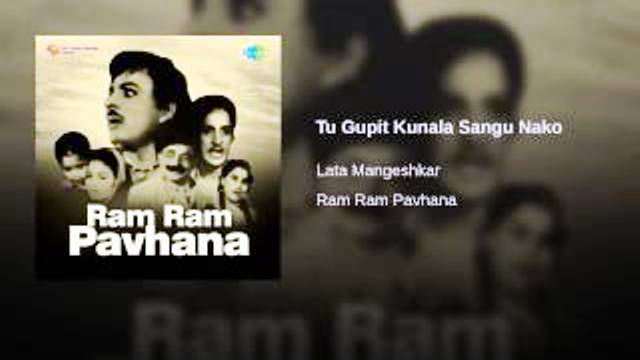
-
Abroad Tours
Lata gave many memorable performances abroad, where she was equally popular as in India. It all began with her performance at London’s prestigious Royal Albert Hall in 1974 to benefit the Nehru Memorial Fund. The album she cut from it was split into two LPs, which sold more than 133,000 copies. In the USA, Canada, and Europe, she drew unbelievably large ethnic audiences. [37]India Today
-
Member of Rajya Sabha
In 1999, the Atal Bihari Government nominated her as a member of the Rajya Sabha, and during her tenure as a Member of Parliament, from 22 November 1999 to 21 November 2005, she never took any allowances. Reportedly, all payments that were made to the singing legend from the Pay Accounts Office were returned. Her tenure as a Member of Parliament, however, was infamous for her being absent from the House, and the records say that she attended the house for only twelve days., and during her term, she asked just one, unstarred, question ‘on the derailment of trains!’ [38]The Indian Expres She asked,
Whether it is a fact that the incidents of derailment of trains on various sections have been on the increase; if so, the number of train derailment incidents since the beginning of the year 2000; the estimated loss suffered by the Railways as a consequence thereof; what measures have been taken by government to prevent such incident?”
-
Legacy
The Madhya Pradesh Government and the Maharashtra Government instituted the ‘Lata Mangeshkar Award’ in 1984 and 1992, respectively.
On 24 April 2022, Prime Minister Narendra Modi became the first recipient of the Lata Deenanath Mangeshkar Award, instituted by the Master Deenanath Mangeshkar Smruti Pratishthan charitable trust in memory of the legendary singer. [39]The Hindu
-
Relevant in Every Generation
Her voice suited to almost every female star, from Madhubala in the 1940s to Kajol in the 1990s, and she sang alongside top male singers, including Mohammed Rafi and Kishore Kumar. She also worked with every leading filmmaker in Bollywood, from Raj Kapoor and Guru Dutt to Mani Ratnam and Karan Johar. Moreover, from roadside vendors to long-distance truckers, and from Army jawans in Ladakh to the glittering elite of Mumbai, Lata Mangeshkar’s voice is considered the one that no Indian can miss.
-
A Feminist
In 2012, she again rose her voice to get royalties from recording companies after her songs, owned by recording companies, began appearing on various music albums. She lamented,
What do I get from this? I don’t get any royalty. Now there is internet and the MP3 format.”
Finally, in 2018, after her decades-long cry, singers started getting royalties, and for her advocacy for fair pay, Lata Mangeshkar was dubbed a feminist. [40]Vox
-
Unfulfilled Desires
In an interview, she revealed that meeting K. L. Saigal and singing for Dilip Kumar were her unfulfilled desires.
-
Daughter of the Nation
On her 90th birthday in 2019, the Government of India honoured her with the title “Daughter of the Nation” as a tribute to her contribution to Indian Music.
-
A Different Lata
Rarely did she play down her image, such as when she toured abroad, where she would let herself go. On holidays in the US, she was often spotted losing heavily at casinos in Las Vegas, enjoying her food at Bombay restaurant in New York, and driving down 52nd Street in a gay, printed sari. [41]India Today She enjoyed listening to Mozart, Beethoven, Chopin, Nat King Cole, the Beatles, Barbra Streisand, and Harry Belafonte. Ingrid Bergman’s stage was her favorite, and she loved watching Marlene Dietrich on stage. During US visits, she loved playing the slot machines in Las Vegas through the night. [42]BBC She admitted this in an interview and said,
This may sound strange but when I used to visit America on holiday, I loved spending time in Las Vegas. It’s an exciting city. I really enjoyed playing the slot machines. I never played roulette or cards – but I used to spend the whole night at a slot machine. I was very lucky and won many times.”
-
Dog Lover
Lata Mangeshkar was an avid dog lover, and she owned nine dogs. [43]BBC In February 2020, she shared photos of her pet dog “Bittu” on her Facebook account.
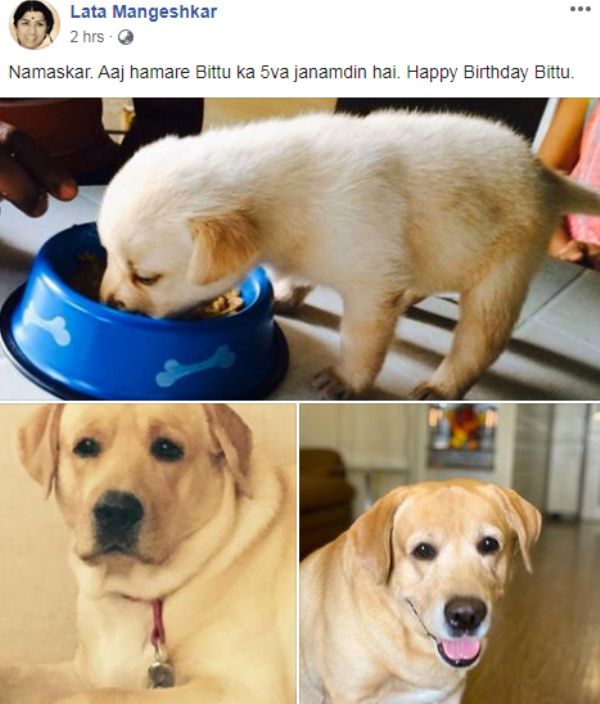
-
Loved Cooking
She had a great passion for cooking, and she would often cook for her family and friends. In an interview, she talked about her love for cooking and the people who taught her the basics of culinary. [44]News 18 She said,
It was my maternal grandmother and mother who taught me how to cook. I started cooking when I was very young and often made lunch and dinner at home. In later years, Mrs. Bhalji Pendharkar, whom we called Bakula Mausi, taught me how to cook some dishes. She was a dear and close family friend. I called her ‘Ma.’ I was very close to her and often stayed with her. She used to wash my hair and taught me how to make pulao and mutton. And many vegetarian dishes too. Mrs. Majrooh Sultanpuri showed me how to make pasanda and chicken curry.”
She added,
I cook quickly, and the kitchen is always left neat and tidy after I have finished. The pleasure of cooking isn’t in cooking, but seeing people enjoy the meal and say they have liked what I made for them – that makes me happy. earlier, when I used to spend time in London, I always used to cook there.”
-
An Outstanding Photographer
According to Lata Mangeshkar, when she entered the entertainment industry, she became curious about cameras and photography, and the first still camera that she ever bought was a Rolleitflex; she bought this for Rs. 1200. In an interview, she talked about her interest in photography and how she would often click for her friends and family. [45]News 18 She said,
My love for photography started in 1946. I was on an outdoor shoot and took a picture of someone who was standing by a river. I became intrigued by photography. I told Madhavrao Shinde, the film editor, about my interest, and he taught me the basics: how to load film and the kind of camera I should buy.”
When she was young, some exhibitions of her photography were also held. She was so skilled at clicking pictures that it was seen as an alternative career for her. Although she enjoyed film cameras, she was critical of digital photography. [46]National Herald She once said,
I don’t know what I’d have done if I wasn’t a singer. But photography was definitely a feasible option. It’s a pity that the art of clicking pictures has been replaced by digital photography. People now take all their pictures on their phone. The sheer joy of capturing cameras through the lens of an old fashioned camera is lost.”
-
A Passionate Cricket Fan
An avid cricket fan, Lata Mangeshkar would often take a break from recording to watch Test matches, and was proud to own a signed photograph of Don Bradman. Reportedly, she helped the BCCI in raising funds to felicitate the members of the 1983 Cricket World Cup-winning Indian squad; she performed a 2-hour-long concert in the Jawaharlal Nehru Stadium in Delhi, where she raised Rs. 20 lakh, which was enough to honour a 14-member Indian cricket team. [47]Koimoi
She was very close to cricketer Sachin Tendulkar. He would call her ‘Aai (mom)’ and visit her at home. At the celebration of Sachin’s 100 international century, she sang a song he suggested at a special function. [48]Hindustan Times
-
Voice insurance
In the 1960s, she had some issues with her vocal cords following which the doctors advised her not to sing for at least a year. Later, she got her voice insured.
-
Last Birthday
On 28 September 2021, her 92nd birthday, which also proved to be her last birthday, she recalled her childhood days and said,
That long journey is with me, and that little girl is still with me. She has not gone anywhere. Some people call me ‘Saraswati’ or say that I have her blessings. They say I am this and that. All this is nothing I believe but the blessings of my parents, our deity Mangesh, Sai Baba, and God.”
She added,
It is their blessing that people like whatever I sing. Otherwise who am I? I am nothing. There have been better singers than me, and some of them are not even with us. I am grateful to God and to my parents for whatever I have today.”
-
The End of an Era
On the morning of 6 February 2022, the world of music came to standstill when the news of Lata Mangeshkar’s demise broke on television sets. On the same day, her last rites were performed at Shivaji Park Crematorium, Mumbai with the full state honour, and it was attended by many dignitaries and celebrities including Shah Rukh Khan, Sachin Tendulkar, and PM Narendra Modi who paid their last tributes to the legendary singer at the crematorium. Later, two-day national mourning was observed for the departed soul. On 10 February 2022, her ashes were immersed in the holy Ramkund on the banks of the Godavari river in Maharashtra.
References/Sources:

